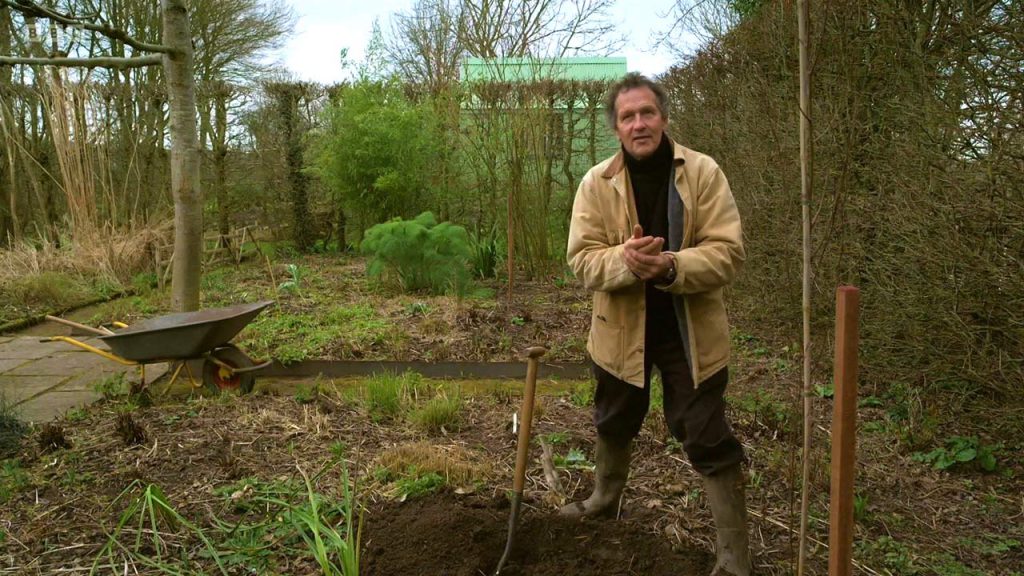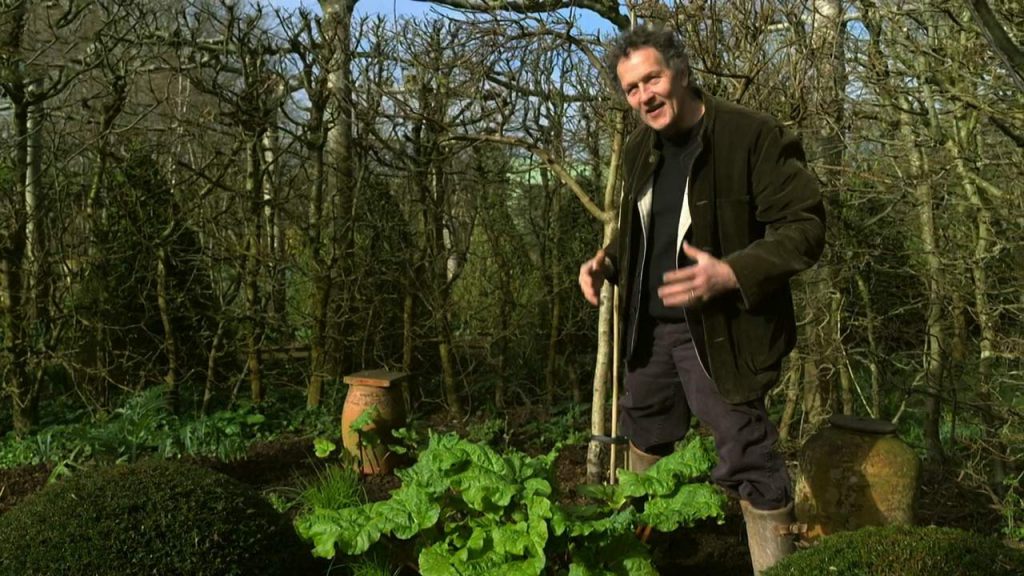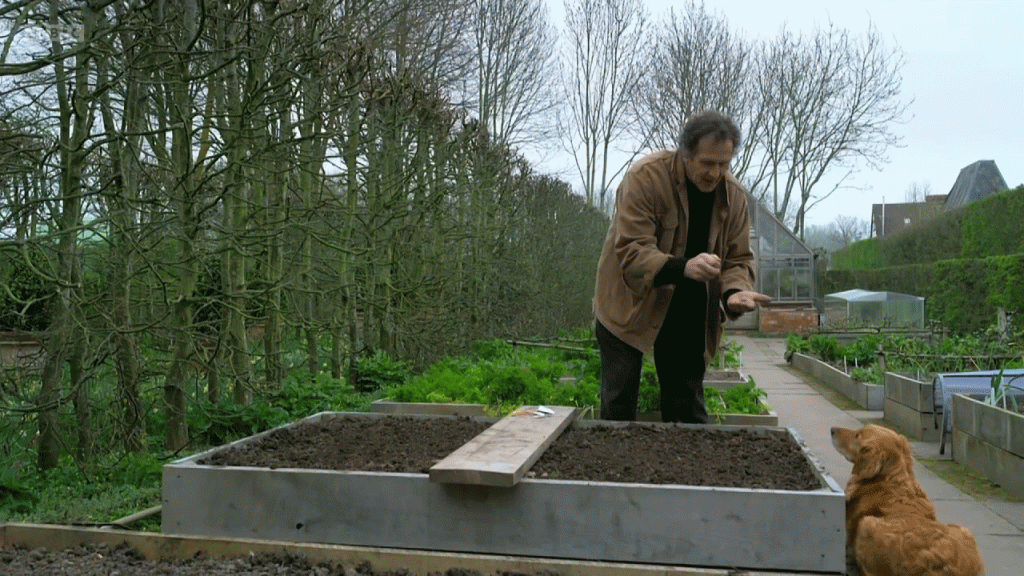Gardeners’ World 2022 episode 2: With spring just around the corner, Monty makes a start on his bog garden and demonstrates how to divide perennials and get plants for free. Rachel de Thame visits a garden in Kent, a labour of love where meticulous planning, discipline and precision have cleverly extended the season, and Arit Anderson plants up a seasonal container inspired by the colours of spring.
We meet an allotmenteer in north west London who loves to experiment with growing unusual and heritage vegetables to use in her cooking, and a couple of plantaholics with a passion for rare and unusual plants show us around their garden, created on the site of a former nursery in Cambridgeshire. Viewers also share their gardening exploits.
Gardeners’ World 2022 episode 2
How to grow tulips
Planted as bulbs, tulips provide spring flowers in dazzling colours and flower shapes. Grow them in borders, rock gardens and containers before summer flowers appear. Specialist tulips related to wild species often multiply in gardens.
This guide is to help you decide which kind of tulips to grow. Most tulips flower in mid to late spring. If you would like earlier flowering spring bulbs, daffodils and snowdrops are ideal choices. Broadly speaking, tulips can be divided into two main categories: border tulips and specialist tulips.
Border tulips
Flowering in spring, this type are seen growing in gardens and parks as temporary displays of seasonal colour (bedding) in borders and containers. They have large colourful flowers, upright stems and wide strappy leaves.
There is a wide range of flower colour to choose from; including white-cream, yellow-orange, blue-purple, red-pink, even greens and dark black-purple. Flower shape adds to this diversity, with single-, double-, lily-flowered, viridiflora, fringed and parrot forms. Different tulip cultivars flower from early to late spring, so careful planning can give a succession of colour before summer flowers begin.
Specialist tulips
These also flower in spring, but usually smaller in flower size and height. They are the wild species, or named cultivars closely related to them. They have a delicate appearance and will often naturalise (multiply) in gardens. A few benefit from a more sheltered location such as a greenhouse or cold frame.
How to grow hydrangeas
There are a number of different hydrangea types but they all enjoy similar growing conditions. They vary in size from small shrubs to sizeable, almost tree-like specimens so check the plant label when buying to get one that is suitable for your space. Which hydrangea you choose will likely depend on your preferences for flower colour and/or shape. Mophead and lacecap cultivars of Hydrangea macrophylla (and also Hydrangea involucrata and Hydrangea serrata) change colour depending on the acidity or alkalinity of the soil (pH) that affects aluminium availability. Those with blue or pink flowers tend to be blue in acid soils (high available aluminium levels), mauve in lightly acid to neutral soil conditions, and pink in alkaline conditions. White, red and green-flowered cultivars, remain white or green regardless of soil pH.
Different hydrangea species also have differently shaped flowers. For round flower heads, choose mophead cultivars of Hydrangea microphylla (hortensia) or Hydrangea arborescens. For flatter flowers select lacecap cultivars of Hydrangea microphylla, Hydrangea serrata, Hydrangea villosa or Hydrangea aspera. And, finally, for cone-shaped flowers go for Hydrangea paniculata or Hydrangea quercifolia.
Plant your shrubby hydrangea soon after purchase. The best time to plant is in spring or autumn. Containerised plants can be planted all year round as long as the soil is not frozen, too wet, or excessively dry in summer (but you can water them well if you really want to plant them then).
How to grow snowdrops – Gardeners’ World 2022 episode 2
For welcome assurance that the brighter days of spring are on their way, look no further than snowdrops (Galanthus). They are surprisingly varied in height, flower size, shape and even colouring. Given a moist soil they will multiply into drifts and provide plenty of plants to share with fellow gardeners.
Any garden can accommodate snowdrops. Plant freshly-lifted snowdrops when the foliage is just dying back in late spring. If it is not possible to plant in late spring, buying just after flowering when the leaves are still green, (‘in the green’) is the next best way of establishing snowdrops. These are available from nurseries by in bundles, or in individual pots.
Lift and divide clumps as the foliage turns yellow. Split the clumps into smaller pieces with as little disturbance as possible. Bulbs can also be planted singly at the same depth as they were on the soil.
Cultivating a Lush Garden: Expert Tips and Seasonal Advice for 2022
Cultivating a Beautiful Bog Garden: A Step-by-Step Guide
Starting Your Bog Garden
Creating a bog garden is an excellent way to utilize wet areas in your garden. Start by selecting a naturally damp area or creating a shallow indentation to retain moisture. Opt for water-loving plants like irises and hostas to bring life to this unique ecosystem.
Dividing Perennials for a Flourishing Garden
Why Divide Perennials?
Dividing perennials is not just about propagating plants; it rejuvenates them, ensuring healthier growth. Spring is the ideal time for this task, as the plants are emerging from dormancy.
How to Divide Perennials
To divide, gently lift the plant, keeping the root ball intact. Use a sharp spade or knife to split the plant into smaller sections, each with roots and shoots. Replant immediately to avoid drying out the roots.
Selecting and Growing Spring Flowers: Tulips, Hydrangeas, and Snowdrops
How to Cultivate Stunning Tulips
Choosing the Right Tulips
Tulips, a spring favorite, offer a variety of colors and forms. Border tulips are perfect for vibrant displays, while specialist tulips, resembling wild species, add delicate beauty. Plant bulbs in autumn for a colorful spring bloom.
Mastering the Art of Hydrangea Care
Types of Hydrangeas and Their Care
Hydrangeas, with their large, eye-catching blooms, are a garden staple. The soil’s pH affects their color, ranging from blue to pink. Plant hydrangeas in spring or autumn, ensuring they have enough space to grow.
The Charm of Snowdrops
Planting and Caring for Snowdrops
Snowdrops signal the arrival of spring. These hardy plants thrive in moist soil and can be planted ‘in the green’ after flowering. They multiply over time, creating a carpet of white in your garden.
Visiting Inspirational Gardens
Exploring the Diversity of Gardens
Visiting different gardens can provide inspiration and new ideas. From Kent’s meticulously planned spaces to heritage vegetable allotments in London, each garden has unique elements to discover and adapt to your own space.




